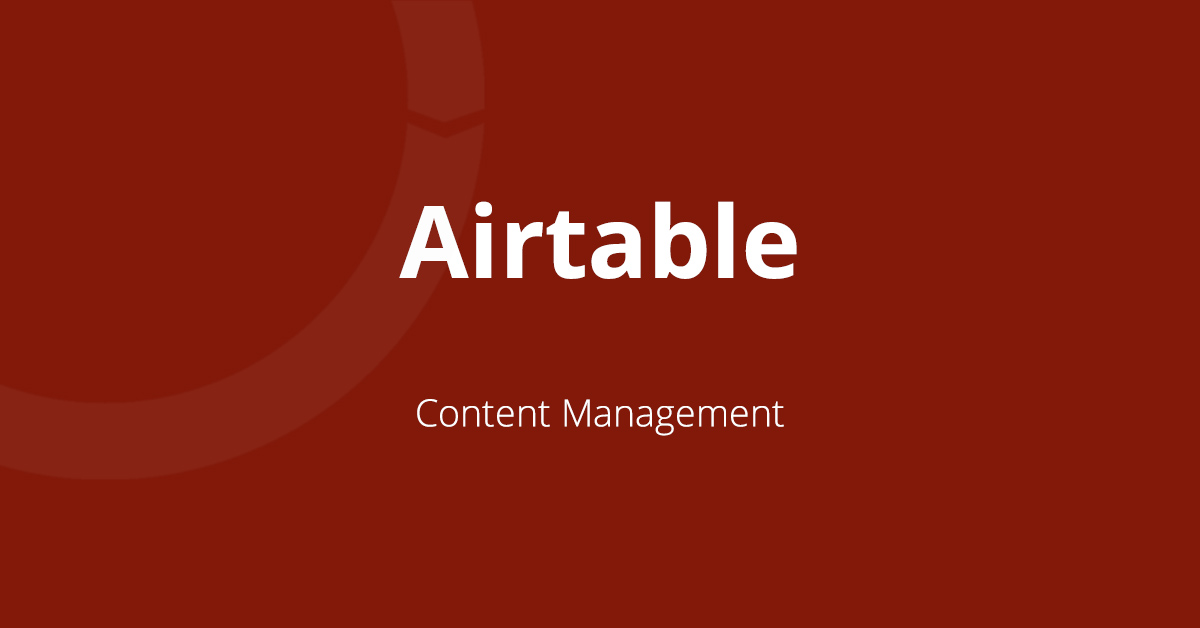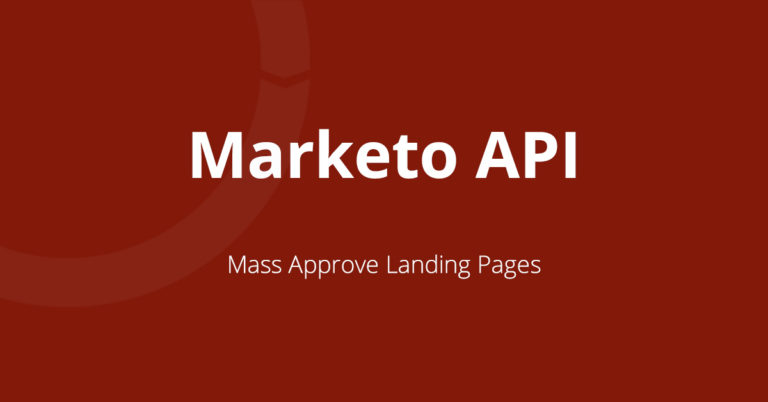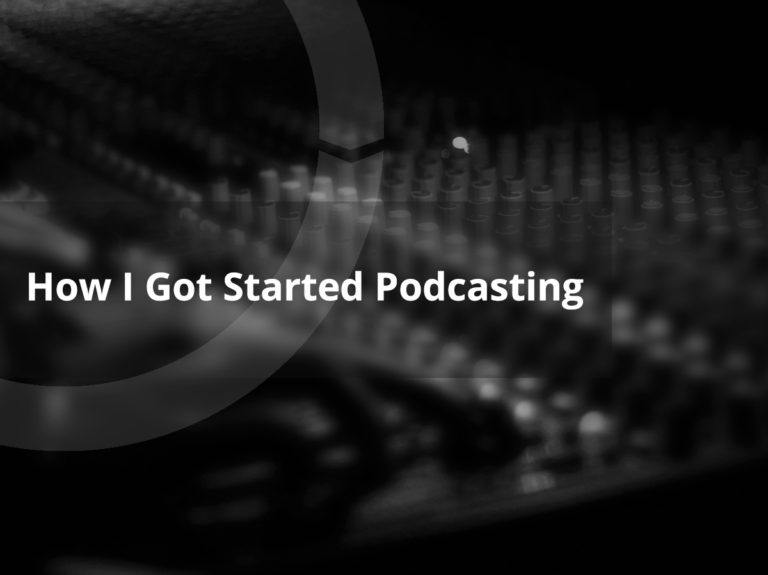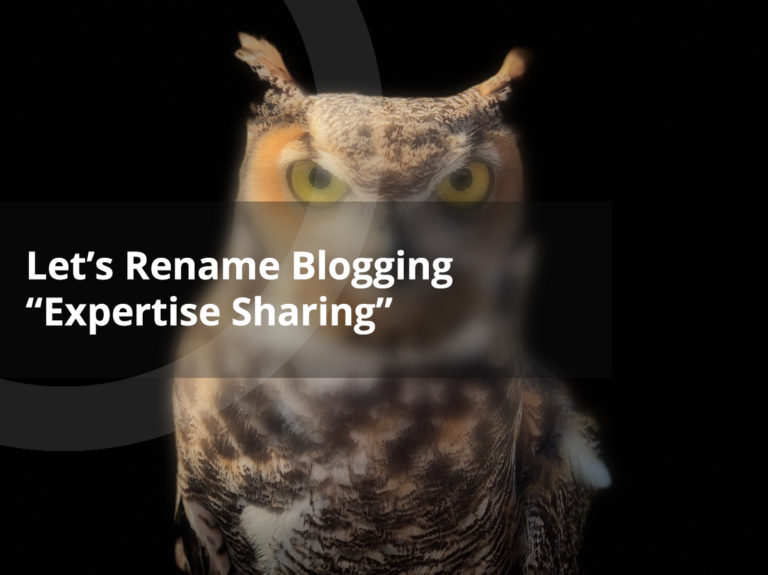Airtable for Content Management
The first Base I ever created for Airtable was to help me manage and plan content and is still something I use almost daily. I even planned this article in my Content base. I use this for my blog posts, LinkedIn updates, podcast episodes, videos, newsletter, and static web pages. Below is the configuration that is involved including the tables, fields, and views. Below is my setup but obviously add or remove and tables for channels you are or aren’t using.
Duplicate the base
I have built a template Base that you are free to use. It is read only so you need to duplicate and add it to your own workspace to be able to edit it. To do this, simply click the dropdown arrow next to Tutorial – Content Management at the top of the screen, then click ‘Duplicate base’ and add it to your workspace.Everything outlined below was built using a free account and requires no special features.
Tables
- Blog
- Podcast
- Video
- Newsletter
- Topics and Resources
- Pages
Blog Table
My content planning always starts with my blog. It is set up to match the same terminology of WordPress so I have fields like Category and Tags. You can modify this to use whichever content platform you use but the concepts will be the same.
Title
The title of the blog post.
Status
Helps organize where content is in the process. The statuses I use are:
- Idea
- Draft
- Ready
- Published
Having these statuses is helpful when using kanban view or even filtered grid views.
Brainstorm
I often create an idea for a post and want to capture my thoughts while they’re fresh in my mind and this is where this field comes in. It is a long text field so I can just keep typing all of my ideas and organize them later.
Link to Doc
I always use Google Docs for writing my content and I link to those docs from Airtable.
Link to Post
I add the url of the post once it is published.
Category
Whichever category I use in WordPress. I have this as a single select field even though WordPress does allow for multiple categories. You can change this as needed.
Tags
I add whichever tags I use in WordPress and this is a linked field to the Topics and Resources table which I find useful in generating additional ideas off of what I have already written.
Image
This always contains the banner image as well as any images I use within the body of the post. Adding the banner images adds a nice touch when using kanban or gallery views.
Meta Description
I use Yoast SEO in WordPress which allows me to edit the meta description.
Date Planned
Helpful to use with the calendar view so that you can have a visual of when you should be publishing different pieces of content.
Date Published
Keep track of when you actually published a piece of content.
Links to the LinkedIn table so that after I create a piece of content, I can also share it with my network.
Newsletter
Links to the Newsletter table as I often have links to my latest posts in my weekly newsletter.
Field and Field Types
| Field Name | Field Type | Choice/Options |
|---|---|---|
| Title | Single line text | Not applicable |
| Status | Single select | IdeaDraftReadyPublished |
| Brainstorm | Long text | Not applicable |
| Link to Doc | URL | Not applicable |
| Link to Post | URL | Not applicable |
| Category | Single Select | Will vary based on how your website is setup |
| Tags | Links to Topics and Resources table | Not applicable |
| Image | Attachment | Not applicable |
| Meta Description | Long text | Not applicable |
| Date Planned | Date | Not applicable |
| Date Published | Date | Not applicable |
| Links to LinkedIn table | Not applicable | |
| Newsletter | Links to Newsletter table | Not applicable |
Views
Grid View
This is the standard view for each table.
Kanban
I use the Kanban view with the status field so that I can easily move content from stage to stage.
Planned
I use the Calendar view using the Date Planned field so I can easily see when my next post is scheduled to be published.
Published
I use the Calendar view using the Date Published field so I can keep track of my publishing activity.
Idea
This uses the Grid view with a filter on the Status to only include records where the status is Idea.
Draft
This uses the Grid view with a filter on the Status to only include records where the status is Draft.
Published
This uses the Grid view with a filter on the Status to only include records where the status is Published.
Grouped by Status
I use the Grid view and choose the Group option to make it easy to see the different pieces of content by stage.
LinkedIn Table
I have a goal of updating LinkedIn two to three times a day and this table helps me organize content and bookmark links that I want to share with my network.
Content
The title of the topic I want to post about.
Text
This is what I paste into the status update in LinkedIn.
Link
The URL of a website or resource that I am sharing.
Stage
I use three stages: Draft, Ready, and Published. I use draft to quickly store ideas as they pop into my head. Once they are refined and ready to be published I add them to the Ready stage. After they have been published I change it to the Published stage.
Type
This refers to the type of content I am sharing. It may be a link to a third party blog post or a YouTube video. It may just be a status update without a link. This is useful for keeping a balance of different resources. You can see all of the values I use in the table below.
Planned Date
The date when I want to publish to LinkedIn. This helps me plan out content so I don’t post too much all at once or go too long between posts.
Published Date
The actual date that I publish to LinkedIn.
File
Any attachment I want to include with the post.
Topics
Links to the Topic and Resources table.
Blog Posts
Links to the Blog Posts table so that I can see when I have shared my blog posts with my network.
Podcasts
Links to the Podcasts table so that I can make sure to share episodes with my network once they’re published.
Video
Links to the Podcasts table so that I can make sure to share episodes with my network once they’re publishedField and Field Types
| Field Name | Field Type | Choice/Options |
|---|---|---|
| Content | Single line text | Not applicable |
| Text | Long text | Not Applicable |
| Link | URL | Not applicable |
| Stage | Single select | DraftReadyPublished |
| Type | Single select | 3rd Party Blog/ArticleImage OwnedLinkedIn PostLinkedIn Status UpdateYouTube 3rd PartyBlog – OwnedVideo-Ted TalkVideo – NativeWebsite/ResourceOwned Podcast |
| Planned Date | Date | Not applicable |
| Date Published | Date | Not applicable |
| File | Attachment | Not applicable |
| Topics | Links to Topics and Resources table | Not applicable |
| Blog Posts | Links to Blog Posts table | Not applicable |
| Podcasts | Links to Podcasts table | Not applicable |
| Video | Links to video table | Not applicable |
Views
Grid View
This is the standard view for each table.
Kanban
I use the Kanban view with the status field so that I can easily move status updates from stage to stage.
Planned
I use the Calendar view using the Planned Date field so I can easily see when my update is scheduled to be posted.
Published
I use the Calendar view using the Date Published field so I can keep track of my update activity.
By Type
I use the Grid view and choose the Group option to make it easy to see the different pieces of content by Type.
Podcast Table
The Podcast table helps me plan content and capture ideas for each podcast episode as well as ensure I am sharing episodes across the different channels.
Title
The podcast title for each episode.
Episode #
The number in the order of when each episode is published. If you are going to use seasons, you could add another field that keeps track of the season as well.
Talking Points
I use a list of items that I want to discuss or ask a guest about during the podcast. It helps me from blanking out when recording.
Planned Date
The date I plan to publish the episode.
Published Date
The date the episode is actually published.
Length
The length of a podcast in h:mm:ss format.
Guests
This links to the Topics and Resource table (which has a category for people) that you can add people to.
Topics
Links to the Topics and Resources table.
Links to the LinkedIn table so I can be sure to share new episodes with my network.
Newsletter
Links to the Newsletter table so I can be sure to include links to my latest episodes in my newsletter.
Attachments
Any attachments you want to add. This could be a cover image for sharing or notes about your guest.
Field and Field Types
| Field Name | Field Type | Choice/Options |
|---|---|---|
| Title | Single line text | Not applicable |
| Episode # | Number | Integer |
| Talking Points | Long text | Not applicable |
| Planned Date | Date | Not applicable |
| Publish Date | Date | Not applicable |
| Length | Duration | h:mm:ss |
| Guests | Links to Topics and Resources table | Not applicable |
| Topics | Links to Topics and Resources table | Not applicable |
| Links to LinkedIn table | Not applicable | |
| Newsletter | Links to Newsletter table | Not applicable |
| Attachments | Attachment | Not applicable |
Views
Grid View
This is the standard view for each table.
Planned
I use the Calendar view using the Planned Date field so I can easily see when an episode is scheduled to be published.
Published
I use the Calendar view using the Publish Date field so I can keep track of when I need to publish my next episode.
Video Table
The table helps my plan different video content and also ensures that I share my latest videos with my network and subscribers.
Name
Title of the video.
Script
The script for the video. Most videos I make are fairly short so use this field works fine but for longer videos you may want to attach a script to the Attachments field.
Status
Helps me keep track from initial concept all the way through being published.
Platform
I primarily use LinkedIn and YouTube but this could also be Facebook, Vimeo, Wisita or any other video platform.
Length
The duration of the video in h:mm:ss format.
Link
The URL of the video.
Published Date
The date the video was published.
File Name
The name of the video file on my computer.
Attachments
Any attachments I want to use such as graphics or scripts.
Topic
Links to the Topics and Resources table.
Links to the LinkedIn table so I can share videos with my network.
Field and Field Types
| Field Name | Field Type | Choice/Options |
|---|---|---|
| Name | Single line text | Not applicable |
| Script | Long text | Not applicable |
| Status | Single select | ConceptScript ReadyRecordedEditedPublished |
| Platform | Multi select | Varies but I use LinkedIn and YouTube |
| Length | Duration | h:mm:ss |
| Link | URL | Not applicable |
| Published Date | Date | Not applicable |
| File Name | Single line text | Not applicable |
| Attachments | Attachment | Not applicable |
| Topics | Link to Topics and Resources Table | Not applicable |
| Link to LinkedIn table | Not applicable | |
| Newsletter | Link to Newsletter table | Not applicable |
Views
Grid View
This is the standard view for each table.
Kanban
I use the Kanban view with the status field so that I can easily move my video projects from stage to stage.
Published
I use the Calendar view using the Published Date field so I can keep track of when my videos were published.
Platform
I use the Grid view and Group the records by Platforms so I can keep track of which videos have been published where.
Newsletter Table
This helps me plan my newsletter content and make sure that I am sharing content that I have created on other channels with my opted-in newsletter subscribers..
Subject Line
The subject line for each newsletter.
Preheader
The preheader text that follows a subject line in inboxes. Usually less than 160 characters.
Brainstorm
I use this field as a place to store my ideas whilst putting together my newsletter.
Send #
The number in order in which a newsletter was sent.
Send Date
The date that an email was actually sent to my subscribers.
My Links
I use this field to keep track of any third party links I want to include in my sends.
Topics and Resources
Links to the Topics and Resources table so I can include and tools or resources as part of the send.
Blog Posts
Links to the Blog Posts table so I can share my latest posts with my subscribers.
Podcasts
Links to the Podcast table so I can share my latest episodes with my subscribers.
Video
Links to the Video table so I can share my latest videos with my subscribers.
Attachments
Any files you may want to add. I often create the newsletter in Google Docs first and then add that file here.
Field and Field Types
| Field Name | Field Type | Choice/Options |
|---|---|---|
| Subject Line | Single line text | Not applicable |
| Preheader | Single line text | Not applicable |
| Brainstorm | Long text | Not applicable |
| Send # | Number | Integer |
| Send Date | Date | Not applicable |
| My links | Long text | Not applicable |
| Topics and Resources | Links to Topics and Resources table | Not applicable |
| Blog Posts | Links to Blog Posts table | Not applicable |
| Podcasts | Links to Podcasts table | Not applicable |
| Video | Links to video table | Not applicable |
| Attachments | Attachment | Not applicable |
Views
Grid View
This is the standard view for each table.
Send Date
I use the Calendar view using the Send Date field so I can keep track of when my newsletters were sent to my subscribers.
Topics and Resources Table
This is the main hub of this base. All of the tables link to this table as it is a great way to store all of the ideas, topics, people, businesses etc. that we talk about through our content. I find it helpful in also planning content and building off of what I have created in the past.
Name
The name of the resource.
URL
The URL to a resource.
Type
How I categorize which type of topic or resource it is. It can be books, tools, people, businesses, topics, and resources/websites.
Blog Posts
Links to the Blog Posts table.
Links to the LinkedIn table.
Video
Links to the Video table.
Newsletter
Links to the Newsletter table.
Pages
Links to the Pages table.
Podcast Guests
Links to the Podcast table for the Guest field.
Podcast Guests
Links to the Podcast table for the Topics field.
Field and Field Types
| Field Name | Field Type | Choice/Options |
|---|---|---|
| Name | Single line text | Not applicable |
| URL | URL | Not applicable |
| Type | Single select | BookBusinessPeopleResources and SitesToolsTopics |
| Blog Posts | Links to the Blog Posts table | Not applicable |
| Links to the LinkedIn table | Not applicable | |
| Video | Links to the Video table | Not applicable |
| Newsletter | Links to the Newsletter table | Not applicable |
| Pages | Links to the Pages table | Not applicable |
| Podcast Guests | Links to the Podcast table | Not applicable |
| Podcast Topics | Links to the Podcast table | Not applicable |
Views
Grid View
This is the standard view for each table.
By Type
I use the Grid view and Group the records by Type so I can easily see the records for each category.
Pages Table
This table helps me plan the static web pages for my site, like the one you are reading right now. It is helpful to link with other topics and plan for which keywords we want to rank for and keep track of when we may need to revise a page.
Page Name
The name of the web page.
URL
The URL to the web page.
Status
Helps to keep track of the progress from idea to being published and ultimately when to update.
Keywords
A list of keywords that I am aiming to rank for.
Topic
Links to the Topic and Resources table.
Last Updated
The last time that a page was updated. Helps me to know when to revise.
First Published
The date that the page went live.
Attachment
This is a default field. You can use it to attach any files such as images or PDFs you want to include on the page.
Field and Field Types
| Field Name | Field Type | Choice/Options |
|---|---|---|
| Page Name | Single line text | Not applicable |
| URL | URL | Not applicable |
| Status | Single Select | IdeaDraftPublishedNeeds Revision |
| Keywords | Long text | Not applicable |
| Topic | Links to Topics and Resources table | Not applicable |
| Last Update | Date | Not applicable |
| First Published | Date | Not applicable |
| Attachment | Attachment | Not applicable |
Views
Grid View
This is the standard view for each table.
Kanban
I use the Kanban view with the status field so that I can easily move my web pages from idea to published.
First Published
I use the Calendar view using the First Published field so I can keep track of when mypages first went live.
Last Updated
I use the Calendar view using the Last Updated field so I can keep track of when my pages were last revised and helps me understand which pages may need revision.
Needs Revision
I use the Grid view with a filter that only looks for records where the status is Needs Revision so I know which pages I should concentrate on updating.






